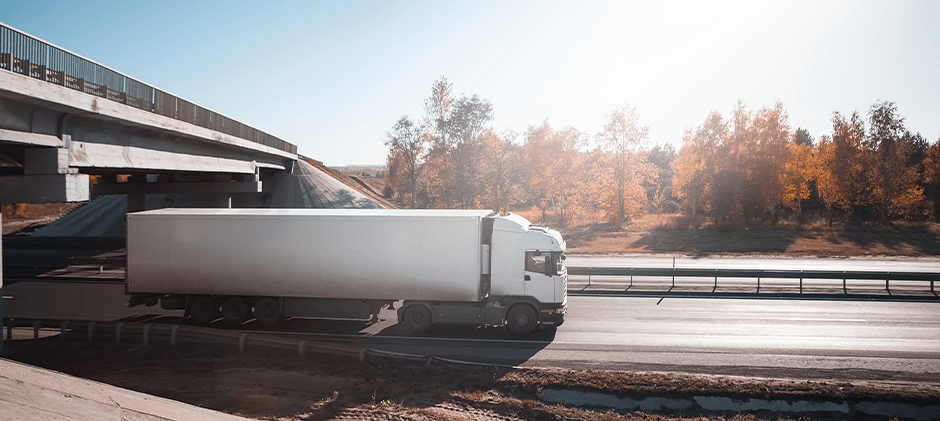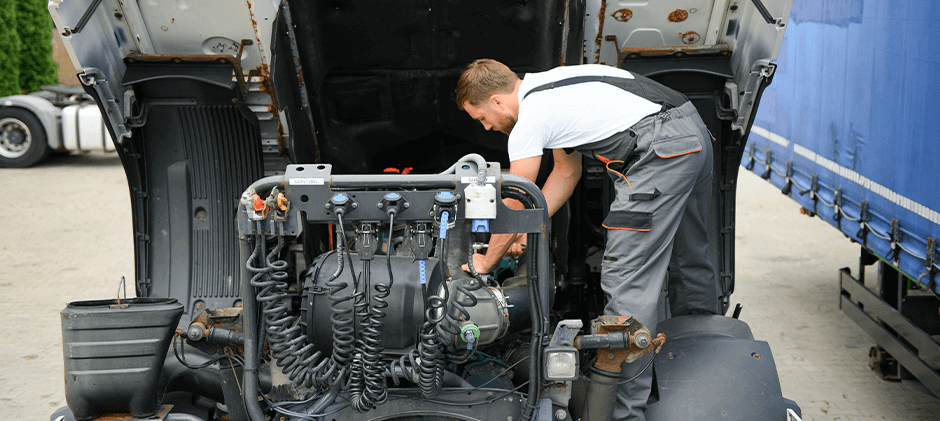When you’re working on trucks or heavy equipment powered by Detroit Diesel, you’ve probably heard folks talking about “12.7” this and “14 liter” that. At FridayParts, we get calls every day from people trying to figure out which Detroit Series 60 engine they have and what parts they need. Let’s clear up the confusion and help you understand what makes these two legendary engines tick – and more importantly, what parts you need to keep them running strong.
Detroit Diesel Series 60 Engines
The Detroit Diesel Series 60 might just be the most successful heavy-duty diesel engine ever made. Since rolling out in 1987, millions of these engines have powered everything from semi-trucks to generators, fire trucks to coaches. But here’s the thing – not all Series 60 engines are created equal.
The Series 60 comes in two main flavors: the 12.7-liter and the 14-liter. Think of them as siblings – they share the same DNA but have different personalities. Both are inline 6-cylinder engines with similar technology, but the size difference matters more than you might think. The 12.7L came first, making its debut in 1987, while the bigger 14L showed up in 1998 to meet demands for more power.
What made these engines game-changers was their electronic controls. Detroit Diesel was ahead of the curve, using the DDEC (Detroit Diesel Electronic Controls) system when other manufacturers were still playing with mechanical injection. This meant better fuel economy, easier diagnostics, and more reliable performance. No wonder you still see so many of these engines earning their keep on the highways today.
12.7L vs 14L Series 60
Let’s get down to the nitty-gritty numbers that matter when you’re choosing parts or comparing engines. The difference between 12.7 liters and 14 liters might not sound like much, but it changes everything from piston size to turbocharger specifications.
12.7L Series 60 Specs:
- Displacement: 12.7 liters (775 cubic inches)
- Bore: 130mm (5.12 inches)
- Stroke: 160mm (6.30 inches)
- Compression ratio: 15:1 to 16.5:1
- Horsepower range: 350-500 HP
- Torque range: 1,350-1,650 lb-ft
14L Series 60 Specs:
- Displacement: 14.0 liters (855 cubic inches)
- Bore: 137mm (5.39 inches)
- Stroke: 160mm (6.30 inches)
- Compression ratio: 15:1 to 17:1
- Horsepower range: 425-575 HP
- Torque range: 1,450-1,850 lb-ft
Notice something interesting? Both engines share the same stroke length – it’s the bore (cylinder diameter) that’s bigger on the 14L. This means the 14L pistons, liners, and some head components are different, even though many other parts interchange between the two engines. We keep this in mind at FridayParts when helping customers find the right components.
Power Output and Performance Differences
Here’s where you really feel the difference between these engines. That extra 1.3 liters might not sound like much, but when you’re pulling 80,000 pounds up a grade, every bit of power counts.
The 12.7L Series 60 earned its reputation as a fuel-sipper. Owner-operators love these engines because they deliver decent power while keeping fuel costs down. “My 12.7 consistently gets 6.5-7 MPG loaded, and I’m not babying it,” shares one trucker on TruckersReport. The sweet spot for the 12.7L seems to be in the 430-470 HP range – enough power for most applications without pushing the engine too hard.
The 14L, on the other hand, is all about raw pulling power. When Detroit introduced it, they marketed it as “the most powerful on-highway diesel engine in North America,” and they weren’t kidding. The 14L shines when you need:
- Extra power for mountain routes
- Better performance at higher altitudes
- The ability to maintain speed on grades
- Confidence when hauling heavy or oversized loads
But that extra power comes at a price – fuel consumption. Most operators report the 14L drinks about 0.5-1 MPG more than the 12.7L under similar conditions. As one fleet manager puts it, “The 14L is like having a bigger hammer in your toolbox. You don’t always need it, but when you do, you’re glad it’s there.”

Identifying Your Series 60 Engine Type
Before you order a single part, you need to know which engine you’re working with. We’ve seen too many customers order 14L parts for their 12.7L engine, and trust us, your wallet won’t thank you for that mistake.
Finding Your Engine Model:
The easiest way is to check the engine serial number. Look for the dataplate on the left side of the block, usually near the front corner. The model number tells the story:
- 12.7L models: Usually start with 6067
- 14L models: Typically start with 6077
Visual Identification Tips:
- Can’t read the dataplate? Here are some visual clues:
- The 14L valve cover is slightly wider due to the bigger bore
- Oil pan capacity differs: 12.7L holds about 38 quarts, 14L takes 40 quarts
The 14L block has a different casting number visible on the side
DDEC Version Matters Too:
Both engines came with different DDEC versions over the years:
- DDEC I & II (1987-1993): Mostly 12.7L
- DDEC III & IV (1993-2007): Both engines
- DDEC V (2002-2007): Later models of both
- DDEC VI (2007-2011): Final production years
Your DDEC version affects which sensors and electronic components you need. When ordering parts from us, having both your engine model and DDEC version helps us get you exactly what you need the first time.
Common Parts and Maintenance Considerations
One of the beautiful things about the Series 60 family is how many parts interchange between the 12.7L and 14L. This makes your life easier when sourcing parts and keeping inventory. But you’ve got to know what’s different to avoid expensive mistakes.
Parts that typically interchange:
- Fuel injectors (same part numbers for many years)
- Turbochargers (depending on HP rating)
- Water pumps and thermostats
- Most sensors and electronic components
- Camshafts and valve train components
- Oil coolers and filters
Parts specific to each engine:
- Pistons and liners (different bore size)
- Head gaskets (must match bore size)
- Connecting rods (14L uses heavier rods)
- Some intake and exhaust manifolds
- Engine overhaul kits (obviously engine-specific)
When it comes to maintenance, both engines follow similar schedules, but the 14L’s higher power output can mean slightly shorter intervals for some components. “I change my 14L injectors at 400,000 miles instead of 500,000 like I did with my 12.7,” notes one owner-operator. “The extra power is harder on fuel system components.”
Typical maintenance intervals:
- Oil changes: 15,000-35,000 miles (depends on oil analysis)
- Fuel filter: Every other oil change
- Valve adjustment: 100,000-150,000 miles
- Overhead adjustment: 300,000-500,000 miles
- Injector replacement: 400,000-600,000 miles
Fuel Economy Comparison and Operating Costs
Let’s talk about what really matters to your bottom line – fuel economy and operating costs. The Series 60 built its reputation on being fuel-efficient, but there’s definitely a difference between the 12.7L and 14L when it comes to MPG.
Real-world fuel economy numbers:
Based on feedback from truckers and fleet managers, here’s what you can expect:
| Engine | Light Loads | Heavy Loads | Mountain Routes |
| 12.7L | 7-8 MPG | 6-7 MPG | 5.5-6.5 MPG |
| 14L | 6-7.5 MPG | 5.5-6.5 MPG | 5-6 MPG |
The 12.7L typically delivers 0.5-1 MPG better fuel economy across the board. Over 100,000 miles, that difference adds up to serious money. At current diesel prices, you’re looking at saving $5,000-10,000 per year with the 12.7L, depending on your routes and loads.
But fuel isn’t the only operating cost to consider. The 14L’s additional power can mean:
- Higher initial purchase price (about $3,000-5,000 more)
- Slightly more expensive parts for some components
- Potentially longer engine life when not pushed hard
- Better resale value in some markets
“My 14L costs more upfront and burns more fuel, but I make more money because I can take heavier loads that my buddies with 12.7s have to pass up,” explains one owner-operator who specializes in heavy haul. It’s all about matching the engine to your specific needs.
Which Engine is Right for Your Application
Choosing between a 12.7L and 14L Detroit Series 60 isn’t just about horsepower – it’s about finding the right tool for your job. Let’s break down which engine works best for different applications.
Choose the 12.7L Detroit Series 60 when:
- You’re running mostly flatland or rolling hills
- Fuel economy is a top priority
- You’re hauling standard van or reefer loads
- Your routes are predictable with consistent weights
- You want lower operating costs
- You’re buying used and want more options

Go with the 14L Detroit Series 60 when:
- You regularly run mountain routes
- You haul heavy or oversized loads
- You need maximum pulling power
- Delivery times are critical (maintaining speed on grades)
- You’re spec’ing for versatility
- Resale value in power-hungry markets matters
Application-specific recommendations:
- Long-haul trucking: 12.7L for fuel economy, 14L for mountains
- Regional delivery: 12.7L is usually sufficient
- Heavy haul/Oversize: 14L all the way
- Motorhomes: 12.7L provides plenty of power
- Fire trucks/Emergency vehicles: 14L for quick response
- Generators: 12.7L for efficiency
Remember, both engines have proven themselves incredibly reliable when maintained properly. We’ve got customers running both engines with over a million miles, still going strong with regular maintenance and quality parts.
Parts Availability and Support from FridayParts
Here’s the good news – whether you’re running a 12.7L or 14L Detroit Series 60, parts availability is excellent. These engines have been around long enough that the aftermarket has really stepped up with quality options. At FridayParts, we stock thousands of Detroit Series 60 parts because we know how many of these workhorses are still out there earning their keep.
Popular Series 60 parts we keep in stock:
- Complete overhaul kits (engine-specific for 12.7L or 14L)
- Fuel injectors (new and remanufactured options)
- Turbochargers for all horsepower ratings
- EGR components for later models
- Sensors for all DDEC versions
- Head gaskets and installation kits
- Water pumps and cooling system parts
The beauty of working with us is that we understand the differences between these engines. When you call and say you need a head gasket for your Series 60, our first question will be “12.7 or 14?” because we know it matters. We’ve been doing this for over 16 years, and we’ve learned that getting you the right part the first time saves everyone time and money.
Price advantages of aftermarket parts:
- Overhaul kits: Save 30-40% versus dealer pricing
- Injectors: Quality remains at 50% of the new OEM cost
- Turbos: Aftermarket options starting at $800
- Sensors: OEM-quality at a fraction of dealer prices
Plus, with our warehouses in the United States, Canada, and Germany, we can get parts to you fast. Because when your Series 60 is down, every day costs money.
Tips for Extending Your Detroit Series 60 Engine Life
Whether you’re running a 12.7L or 14L, these engines can go the distance with proper care. We’re talking million-mile engines here, but only if you treat them right. Here’s wisdom gathered from mechanics and operators who’ve been there.
The million-mile maintenance secrets:
Oil is everything – Both engines thrive on quality oil and regular changes. Don’t push oil change intervals just to save a few bucks. “I’ve rebuilt engines that went 600,000 miles looking like new inside, and others that were junk at 300,000. The difference? Oil change records,” says a Detroit Diesel technician with 30 years under his belt.
Keep it cool – The Detroit Series 60 runs hot, especially the 14L under load. Make sure your cooling system is topped up, the radiator is clean, and the fan clutch works properly. Overheating is the fastest way to kill either engine.
Don’t ignore the small stuff – That minor coolant leak or slight loss of power might not seem like a big deal, but small problems become big problems fast on these engines. Fix issues while they’re cheap.
Quality parts matter – We know everyone loves a bargain, but putting cheap injectors in your Series 60 is like putting regular gas in a Ferrari. These engines were designed for precision, and quality parts keep them running that way.
Regular overhead adjustments – Both engines need valve and injector adjustments. Skip them, and you’ll burn more fuel and lose power. It’s a few hours of work that pays for itself in fuel savings.

Making Your Detroit Series 60 Last for the Long Haul
At the end of the day, both the 12.7L and 14L Series 60 engines have earned their place in trucking history. They’re reliable, efficient, and powerful enough to get the job done. The key is matching the right engine to your needs and keeping it maintained with quality parts.
At FridayParts, we’re proud to support Series 60 owners with everything from basic maintenance items to complete overhaul kits. We know that when you’re searching for parts at 9 PM on a Thursday, you need answers fast and parts even faster. That’s why we’ve built our business around getting you the right part, at the right price, at the right time.
Whether you’re piloting a fuel-sipping 12.7L across the prairie or muscling a 14L up the Rockies, we’ve got your back. Because we believe that come Friday night, you should be relaxing with that cold beer, not worrying about whether your engine will make it through another week.
Remember: Fix it once, fix it right – with quality parts and proper maintenance, your Detroit Series 60 will keep earning for years to come.
Need parts for your Detroit Diesel Series 60? Whether you’re running a 12.7L or 14L, FridayParts has you covered with over 70,000 parts in stock. From sensors to complete overhaul kits, we ship from multiple warehouses to get you back on the road fast. Visit FridayParts.com or give us a call – we speak Series 60.
